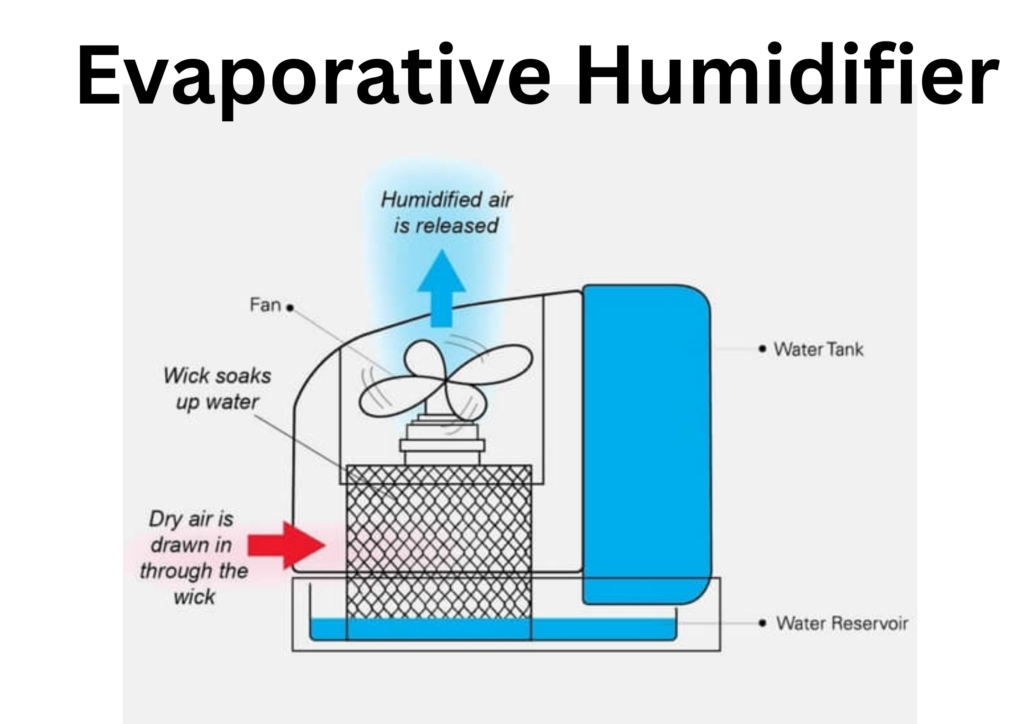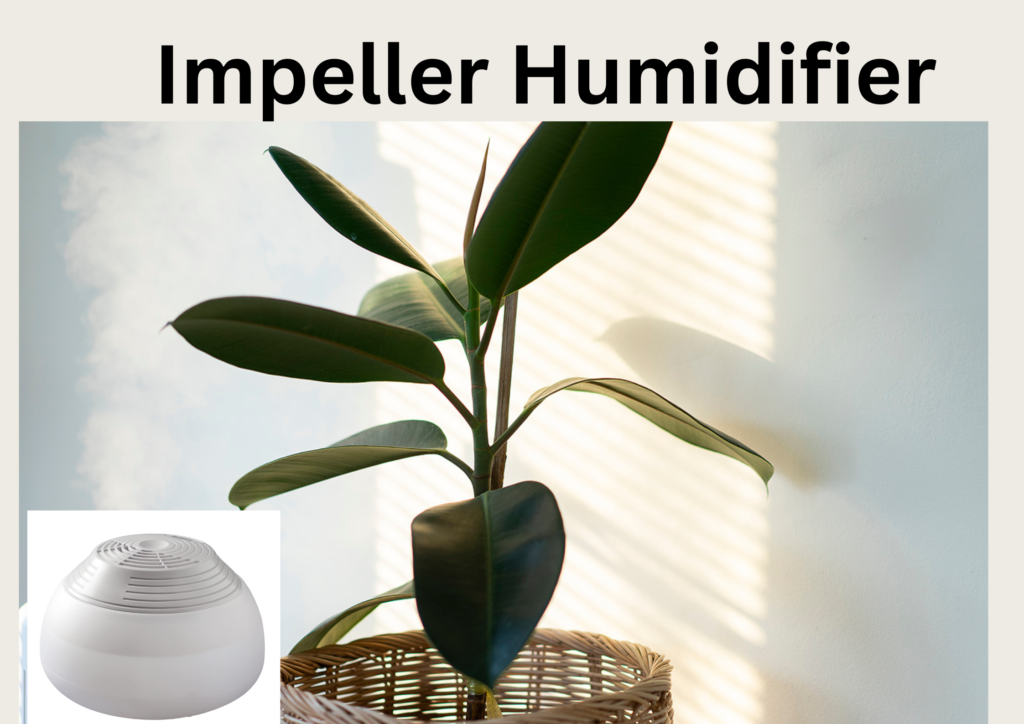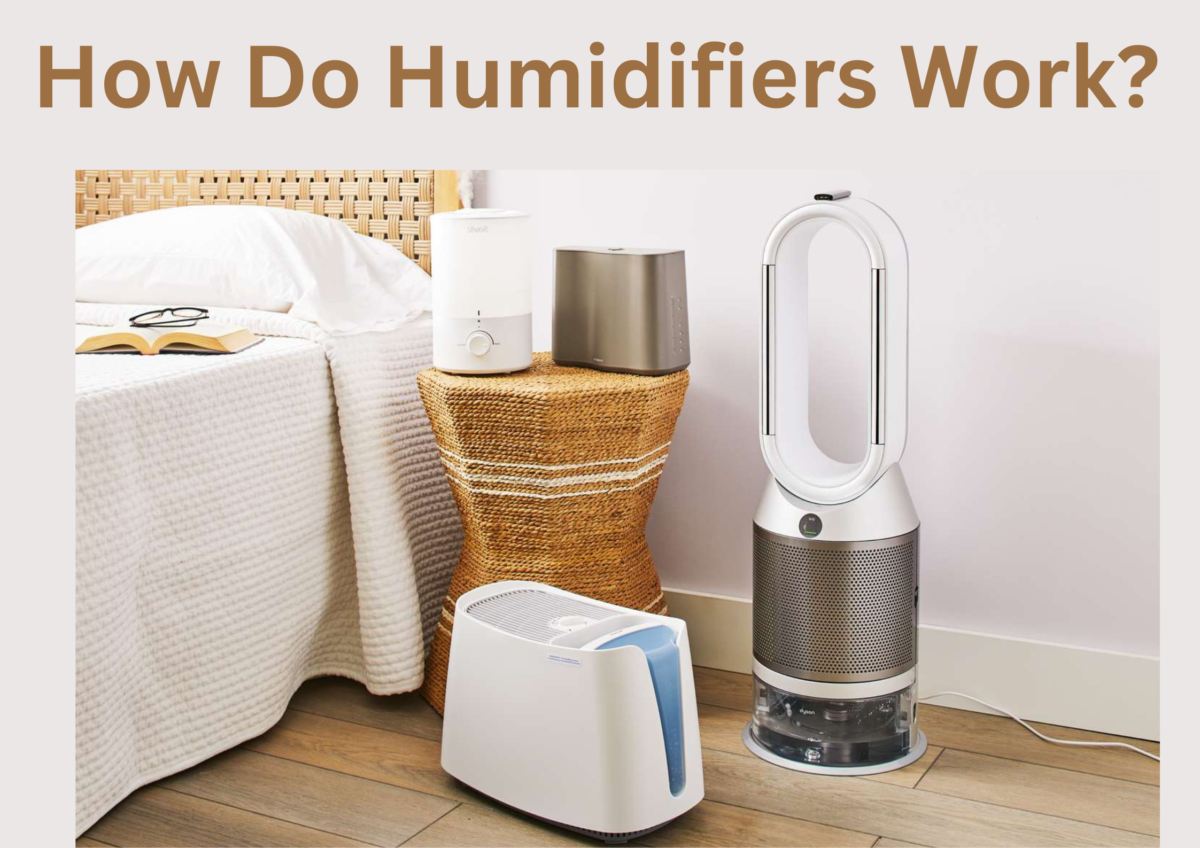Humidifiers give you relief if you are suffering from a cold, cough, nasal congestion, or respiratory diseases like asthma, allergy symptoms, etc. These devices keep the surrounding air’s humidity at the recommended level and thus keep a person healthy.
However, the selection of a suitable humidifier is a tedious job. Before buying a humidifier for your home you must know the basic working principles of these humidifiers. How do humidifiers work? Read, this article to get a clear idea about the working principle of different types of humidifiers and select the best humidifier according to your requirements.
What Is a Humidifier?
A humidifier is used to increase the humidity or moisture in the room or the entire home. Humidity or moisture can be defined as the amount of water vapor in the air. A humidifier adds moisture to the room to maintain the optimal level of humidity.
According to the United States Environmental Protection Agency, the humidity level of a room should be maintained between 30% to 50%. If the humidity level is above 50%, it is known as a high relative humidity level. This leads to the growth of biological organisms such as dust mites, and microscopic animals in the home. This causes allergic reactions to household dust and molds. If the humidity level is below 30% it is known as a low relative humidity level. This leads to dry air, which makes your skin, scalp, and nasal passageways dry.
A humidifier makes the surrounding air healthy and protects your health and well-being indoors.
What Is Relative Humidity
If you want to check whether the air in your home is healthy, you must measure the air’s relative humidity. Relative humidity is a measure of the water vapor content of air. The relative humidity of the air in your home depends on the region and climate you live in.
The relative humidity of air is calculated by dividing the amount of water vapor in the air by the amount of moisture the air can hold at a given temperature.
Relative Humidity=
(Amount of water vapor in the air(g/m^3))/(Amount of moisture the air can hold at a given temperature (g/m^3))×100
Importance of Relative Humidity for Indoor Comfort and Health
The optimal relative humidity of a home ranges between 30% to 50%. This ideal humidity level of air leads to a healthy life. So, maintaining an optimal humidity level is necessary for optimal comfort and health. To keep the humidity level balanced you can use several devices like humidifiers, dehumidifiers, ventilators, etc.
When the relative humidity of your home is below 30%, it is called a low humidity level. A low humidity level means less moisture or dryness in the air. Dry air can promote the movement of viruses in the air. This causes irritation in the nasal passageways and increases susceptibility to respiratory infections. Dry air also makes your skin, and scalp dry.
If the relative humidity of your room is above 50% it is known as a high humidity level. There are high chances of growing microorganisms like fungi, and bacteria rapidly in this type of air. This leads to difficulty in breathing and also causes allergic reactions in people with asthma or allergies to mold.
Role of Humidifiers in Balancing Humidity Levels
Humidifiers are used to add moisture to the air. These devices emit water vapor to keep the room moist. It improves the dry indoor air and maintains the air’s humidity at the recommended value.
How Do Humidifiers Work?
Various types of humidifiers are available in the market. All humidifiers are designed to increase the moisture level of the air by adding water vapor mist into it. But working principles of these humidifiers are different from one another. Let’s discuss the working principle of some of the important types of humidifiers.
Evaporative Humidifier

Evaporative humidifiers are the most common type. The moisture they emit into the air is of room temperature to cool. So, evaporative humidifiers are a type of cool mist humidifier. These humidifiers work on the basic principle of natural evaporation and use a simple mechanism to speed up this process. In this process, the mist blowing into the room is clean, but these devices need to be cleaned properly at certain intervals.
Evaporative humidifiers are self-regulating. An evaporative humidifier emits moisture and it increases the humidity level of the room. When the humidity reaches the recommended level, the humidifier slows down and it starts emitting moisture at a slower rate.
Working Principle of Evaporative Humidifier
An evaporative humidifier consists of 3 main components i.e.,
- Water tank: It stores the water which evaporates to increase the humidity level of the surrounding air.
- Filter: The filter absorbs water from the reservoir or water tank.
- Fan: The fan circulates the air over the moistened wick or filter.
An evaporative humidifier works as follows.
- The first step is to fill clean water in the water tank or reservoir. The size of the water tank varies according to the design of the humidifiers.
- The filter absorbs water from the water tank and it becomes moist.
- When you turn on the fan, it blows air over the moistened filter. When the moistened filter surface is exposed to the circulating fan, evaporation starts.
- The evaporated moisture is released into the surrounding environment which increases the humidity level of the air. Thus an evaporative humidifier helps in maintaining the optimal humidity level of the surrounding air.
Ultrasonic Humidifier

An ultrasonic humidifier consists of a vibrating element that pushes microscopic water droplets into the surrounding air. The sound frequency of these vibrations is extremely higher than the range of human hearing. So, these humidifiers are called ultrasonic humidifiers. These humidifiers are also known as cool-mist humidifiers as they don’t contain any type of heating element to release moisture into the air.
While purchasing, select an ultrasonic humidifier with a built-in humidistat, that controls this device automatically and saves the room from becoming over-humidified. These devices consume less electricity to produce water vapor and also provide quieter performance than other humidifiers.
Working Principle of Ultrasonic Humidifier
An ultrasonic humidifier consists of 2 main elements.
- Water Reservoir: It stores the water that converts into water droplets to increase the humidity level of the air.
- Diaphragm or other vibrating element: It vibrates at an extremely high frequency and thus releases water droplets into the air.
An ultrasonic humidifier works as follows.
- An ultrasonic humidifier consists of a water tank and a vibrating element.
- This device uses high-frequency technology to send vibration from the diaphragm or other vibrating element to the water reservoir.
- With these vibrations the water breaks into water droplets and releases into the surrounding air.
- These water droplets transform into vapors and create a cooler and moist environment.
Central Humidifiers
A central humidifier is used to maintain optimal humidity levels in the surrounding air. It keeps the humidity level of a whole building or entire house in the range of 30% to 50% to make a pleasant environment.
A central humidifier is integrated into the plumbing system, air heating system, or, HVAC system to maintain the humidity level. As these devices are connected to the plumbing system, you need not have to fill the water tank. So, they require very little maintenance.
Central humidifiers are highly energy-efficient devices. They consume less electricity and help in reducing the electricity bill. It maintains the humidity level and helps people recover from respiratory diseases.
Working Principle of Central Humidifiers
A central humidifier is connected to the plumbing system of a house. So, the water used by the device is supplied directly from the plumbing system. Inside a central humidifier, there is either a rotating drum, humidifier pad, or a steaming system that distributes water into the air. When the water evaporates into the air, the moisture or humidity level of the air increases.
It also contains a humidistat that automatically controls the humidity level of the whole house or building.
Steam Vaporizers
Steam vaporizers are a type of warm-mist humidifier. These devices are used to increase the humidity level of a room. These devices require near-constant maintenance. They need to be cleaned properly to remain safe and healthy.
A steam vaporizer is generally used for medical purposes. It provides relief from allergic problems, colds, flu, nasal congestion, etc.
Working Principle of Steam Vaporizers
A steam vaporizer consists of 2 main elements.
- Water reservoir: It stores the water which converts into steam in the next step.
- Heating element: It is used to boil water.
A steam vaporizer uses a heating element that boils water in the reservoirs. This process creates steam and this steam is released into the air to increase the humidity level of the air.
Impeller Humidifier

Impeller humidifiers are child-friendly devices. They work best for people with breathing difficulties and problems like asthma, allergies, etc. Impeller humidifier uses a highly rotating disk and diffuser to create cool mist air.
Working Principle of Impeller Humidifier
Impeller humidifier consists of 3 main elements.
- Water tank: It stores water that is being converted into moisture.
- Rotating disk: It is used to fling water at the diffuser.
- Diffuser: It breaks the water into the water droplets that is being circulated into the air.
An Impeller humidifier consists of a rotating disk that throws water against a diffuser. The diffuser then breaks the water into water droplets. These water droplets are emitted and added as a cool mist to the air which increases the humidity level of the air.
Conclusion
In winter or dry environments, humidifiers are used to maintain the humidity level of the surrounding area. Nowadays various types of humidifiers are available in the market. However, the basic working principles of these humidifiers are different from one another. If you want to maintain the humidity level of your entire home or, building you must choose a central humidifier. But if you want a humidifier for medical purposes such as to get relief from cold, flu, or nasal congestion an evaporative humidifier, or steam vaporizer is the best one. This article explains the working principle of all important types of humidifiers. If you are purchasing a humidifier for medical purposes consult your doctor first.
FAQS
- Can you sleep by a humidifier?
Yes, sleeping by a humidifier will provide you with comfort and good sleep. Humidifier adds moisture to the air and makes the air more refreshing and healthier. If you live in an area where the temperature is very low and the environment is very dry you should buy a humidifier to get relief from cold, flu, dry skin, respiratory problems, etc.
2. Is a humidifier good for health?
Yes, humidifiers are good for health. Using a humidifier in your room, or in the entire house can help people with various medical problems like cold, flu, nasal congestion, allergies, asthma, dry skin, dry hair, etc.


35 thoughts on “How Do Humidifiers Work? A Complete Guide 2025”